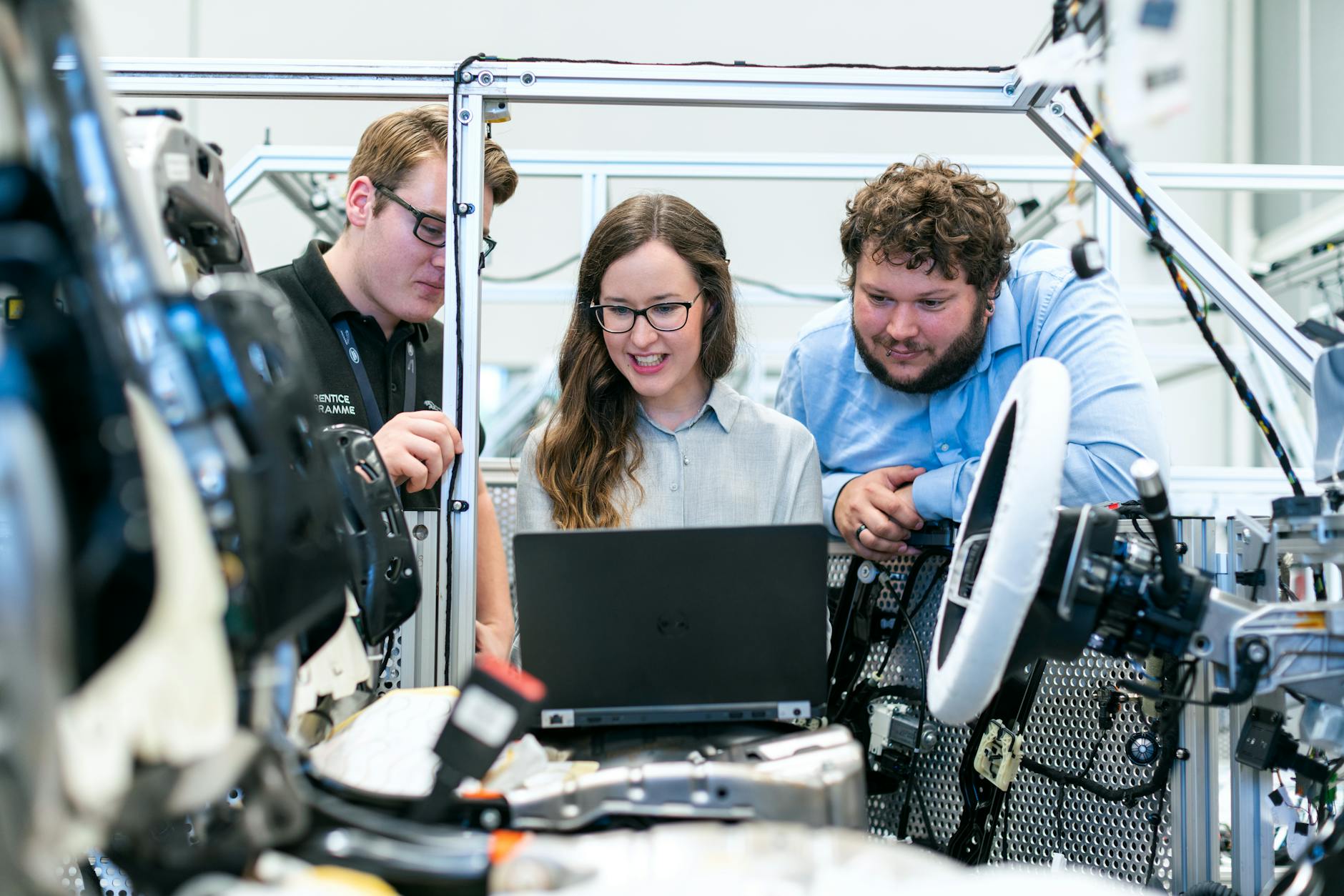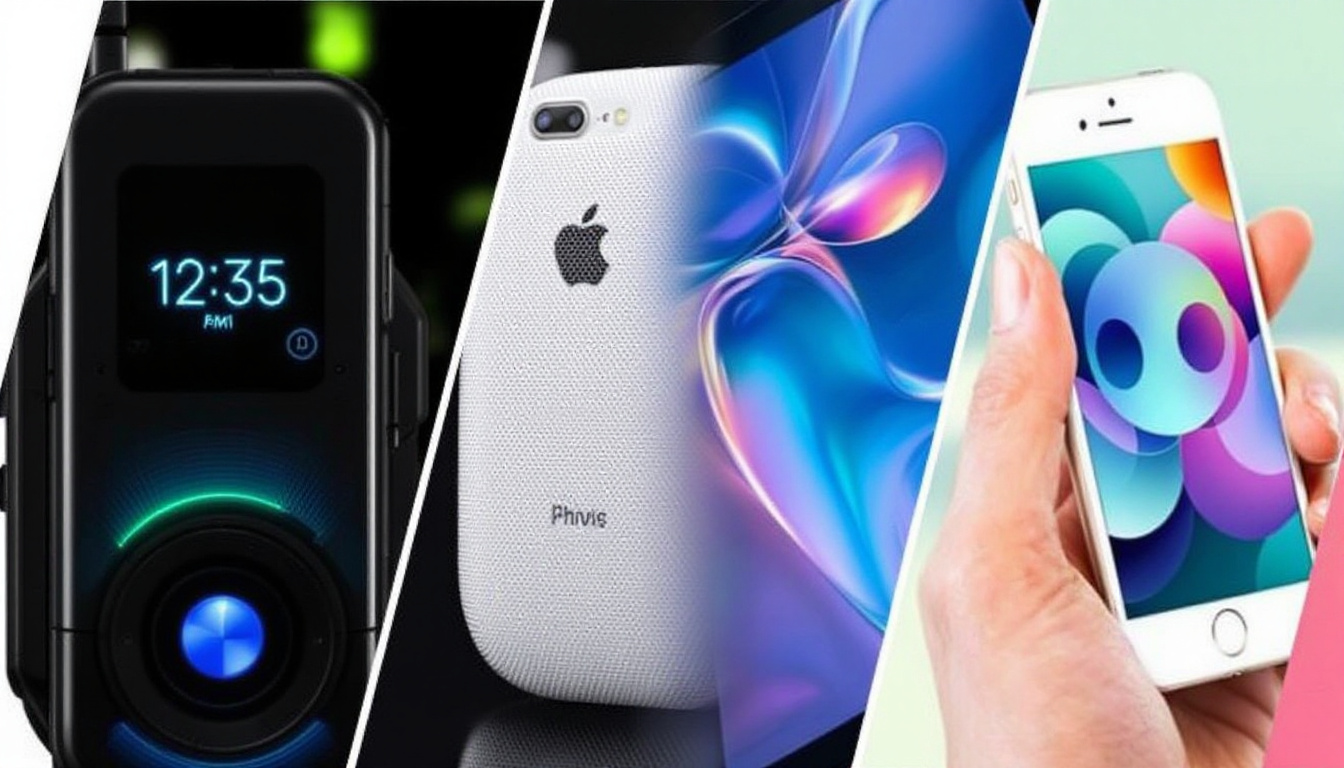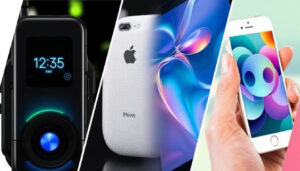Innovation in electronics will change the way businesses work in 2025. Next-generation devices will not only increase productivity but also help teams work smarter with new features and reliable integration. IT professionals, developers, and business leaders will need tools that connect easily, run faster, and adapt to new needs.
Investments in smarter automation, longer battery life, and flexible platforms will define this next wave of technology. Modern gadgets are expected to improve daily tasks, security, and remote management for organizations of all sizes. With practical business uses at the core, 2025’s lineup aims to deliver solutions that support growth, efficiency, and agility. For those looking to improve productivity through new tech, exploring resources like the Cloud Automation Strategies for 2025 can provide deeper insights into maximizing these tools.
Smart Devices Redefined: Top Game-Changing Gadgets for 2025
In 2025, several innovative electronic devices are positioned to change expectations for workplace tools and personal productivity. Rapid advancements in AI, augmented/virtual reality, and smart home technology will unify office systems, streamline workflows, and create smarter routines for professionals. As hardware catches up with software innovation, business leaders and IT teams will find practical solutions to everyday challenges. Staying current with trends—such as those outlined in Future-proofing home electronics—offers strategies to manage adoption and protect investments in this fast-evolving area.
AI-Integrated Wearables for Business Productivity
Wearable devices powered by artificial intelligence will set a new standard for real-time assistance and workflow efficiency in professional settings. These devices focus on supporting multitasking, health monitoring, and instant data access.
Key features anticipated in 2025’s AI-integrated wearables include:
- Context-aware notifications: Devices filter out noise, showing only the most critical updates.
- Intelligent scheduling and reminders: Smart suggestions before, during, and after meetings.
- Voice-driven commands: Enhanced natural language processing for hands-free operation.
- Continuous biometric tracking: Advanced sensors for wellness and stress analytics.
An early standout, the Omi AI wearable, demonstrates how these innovations work in action by syncing with cloud calendars, streamlining communication, and recording transcriptions directly from voice commands (Wearable AI Productivity Devices). As highlighted in Top 5 AI Devices to Use in 2025, the competitive landscape is fueling rapid improvements in accuracy and application integration. Businesses will gain tools that help professionals stay focused, automate repetitive tasks, and optimize daily routines with minimal manual intervention.
Next-Level Augmented and Virtual Reality Systems
New AR and VR systems arriving in 2025 address a range of practical business needs, moving beyond entertainment into professional training, product visualization, and remote collaboration.
 Photo by Jakub Zerdzicki
Photo by Jakub Zerdzicki
Progress in next-generation AR/VR systems features:
- Improved visual fidelity: High-resolution OLED microdisplays for sharper images.
- Lightweight ergonomic designs: More comfortable hardware for extended sessions.
- Spatial collaboration tools: Real-time shared 3D workspaces for distributed teams.
- Integrated productivity apps: Support for legacy business software inside immersive environments.
For example, the upcoming VR headsets in 2025 introduce premium, lightweight options targeting professionals who require both mobility and performance. PCs and standalone devices now support more realistic training modules and interactive presentations. Detailed reviews and updated lists can also be found in The Best VR Headsets for 2025, which break down new hardware with business use in mind.
IoT-Driven Home and Office Solutions
Connecting more devices across office and home settings, IoT-driven solutions in 2025 address energy efficiency, security, and unified device management. These new platforms prioritize seamless integration, making it easier for IT departments and business owners to configure, control, and expand their connected systems.
Benefits of IoT-driven solutions include:
- Centralized device management: One dashboard to monitor and adjust devices.
- Automation of repetitive tasks: Routine activities—lighting, temperature, and surveillance—run on smart schedules.
- Enhanced security: Real-time alerts for unauthorized access or anomalies.
- Remote diagnostics: Faster support and maintenance from afar.
Industry forecasts, such as those in IoT Trends To Drive Innovation For Business In 2025, underscore a jump in adoption rates and new opportunities for businesses to cut costs. The market for IoT solutions is expected to surpass $600 billion, a sign of widespread trust and application as described in 10 IoT Trends Shaping the Future in 2025. For those responsible for infrastructure, following best practices for keeping up with connected tech—like those covered in the internal article Future-proofing home electronics—can help keep systems secure and future-ready.
Wireless Technology and Connectivity Trends Powering Innovation
Heightened connectivity is reshaping how electronic gadgets serve businesses at every level. In 2025, smarter and faster wireless technology is creating new standards for device performance, integration, and network management. This shift enables more reliable operations and unlocks practical solutions for professionals across sectors. The focus now lands on the protocols and trends that make this progress possible.
Latest Advances in Wireless Protocols
 Photo by Jacob
Photo by Jacob
The wireless standards arriving in 2025 will set new records for speed, reliability, and network efficiency. Major developments include:
- Wi-Fi 7 (802.11be): Expected to deliver over 30 Gbps speeds, Wi-Fi 7 reduces latency, improves performance in dense environments, and manages multiple device streams effortlessly.
- 6G Networks: With a predicted jump to terabit-per-second data rates, 6G is in trial phases. It promises ultra-low latency for real-time collaboration, immersive experiences, and mission-critical systems.
- Satellite IoT Expansion: As networks integrate satellite connectivity, reliable coverage reaches remote and mobile operations, offering businesses greater flexibility and higher uptime.
- Advanced eSIM Capabilities: eSIM technology allows devices to switch carriers on the fly, simplifying fleet and asset management for IT divisions.
Adoption of these protocols not only increases performance but also supports innovations in automation, AI, and cloud-based tools. Coverage on trends such as Six Connectivity and Telecom Trends to Watch for in 2025 highlights how shifts in wireless standards drive both consumer and enterprise innovation. For organizations seeking technical specifics or projected capabilities, a detailed breakdown is available in internal resources like Emerging Wireless Standards 2025.
Implications for Device Integration and Security
Stronger wireless standards open new paths for integrating devices into complex business systems. Fast protocols and secure architectures help reduce downtime and minimize risks related to cybersecurity.
Key implications include:
- Unified Management: Modern standards support more stable device connectivity, allowing businesses to deploy diverse endpoints without sacrificing compatibility or performance.
- Network Segmentation: Wi-Fi 7 and future 6G standards enhance control over device access, making it easier to segment and secure sensitive data traffic.
- Enhanced Encryption: New protocols employ advanced cryptographic methods to guard data across open networks, helping IT teams comply with privacy regulations.
- Seamless Updates: Over-the-air firmware and security patches become practical at scale, lowering manual maintenance and reducing vulnerabilities.
Wearable gadgets, smart sensors, and mobile platforms now operate within virtualized and edge environments, making real-time protection and streamlined deployment the norm. When teams adopt technologies aligned with the latest standards, they can maintain visibility and control even as the number of connected devices grows.
Business Opportunities in Connected Environments
Upgraded connectivity standards are a catalyst for fresh business opportunities. New protocols pave the way for smarter automation, real-time analytics, and fresh service delivery models.
Businesses see tangible benefits, including:
- Remote Operations: Reliable wireless coverage—enabled by satellite IoT and enhanced eSIM—supports everything from logistics tracking to remote inspections in industries like energy, transport, and healthcare.
- Edge Computing: Low-latency connections bring processing closer to the endpoint, reducing response times for automation, AI, and safety monitoring.
- Personalized Customer Service: Fast, secure networks make it possible for retailers and service providers to deliver personalized experiences, tailored offers, and interactive support in real time.
- Scalable Work Environments: IT managers gain the power to expand or reconfigure device fleets as needs shift, maximizing return on investment and adapting to dynamic workforce demands.
The transition to these new standards aligns with broader industry trends in electronics and compliance. Firms tracking Sustainability Standards for Electronics 2025 are discovering how connectivity upgrades support more efficient energy use and better resource management, reinforcing both competitive and regulatory advantages.
By prioritizing wireless advancements, organizations position themselves to capture new efficiencies, bolster security, and innovate how services and processes are delivered.
AI, Automation, and Machine Learning: The Brains Behind Tomorrow’s Gadgets
Artificial intelligence, automation, and machine learning now shape the core of the most anticipated gadgets arriving in 2025. These technologies steer devices to work smarter, process data at greater speed, and adapt instantly to changing business requirements. For IT professionals and developers, the integration of intelligent systems brings both new efficiencies and opportunities to extract deeper business value. Understanding the role of embedded AI in real-time decision-making, next-gen automation, and data security is key to gaining a competitive edge.
Embedded AI for Real-Time Decision-Making
 Photo by Sanket Mishra
Photo by Sanket Mishra
AI has moved from powerful servers to the very chips embedded within devices. On-device machine learning models now enable instant processing, reducing lag and dependency on cloud resources. This shift supports mission-critical applications such as factory automation, predictive maintenance, and real-time analytics.
Key business benefits of embedded AI in 2025’s devices include:
- Faster response times: Devices interpret data at the source, supporting operations like financial fraud detection or quality control without delay.
- Offline capabilities: AI algorithms perform locally, keeping essential services running even during network disruptions.
- Personalization at scale: Gadgets adapt to user behavior and preferences, delivering tailored experiences and outcomes.
The rapid adoption of these features results from ongoing improvements in silicon, open-source frameworks, and software partnerships. For organizations evaluating new electronics, access to comprehensive reviews like the Top AI Tools of 2025 can clarify which platforms deliver reliable performance and integration options.
Automation in the Workplace and Remote Operations
The workplace is changing as more tasks move from manual oversight to automated systems driven by AI. From administrative workflows to large-scale industrial processes, automation now stretches across all sectors—helping reduce errors, cut costs, and free up skilled talent for higher-value projects.
Practical automation advancements expected in 2025’s devices:
- Autonomous scheduling tools: Meeting room management, inventory checks, and employee PTO approvals run with less human input.
- Remote system diagnostics: Devices flag issues and run diagnostics, letting IT teams fix problems without in-person intervention.
- Automated data entry and validation: Routine paperwork and compliance checks handled via optical character recognition and natural language processing.
Recent industry reviews, such as the report on AI in the workplace in 2025, highlight how businesses using AI-powered agents now see measurable gains in productivity and service quality. For IT teams seeking a deeper breakdown, Understanding AI Agents details the scope, risks, and applications of these advanced automation tools.
Enhanced Data Security and Predictive Analytics
Machine learning and automation will play a leading role in safeguarding business data and predicting market changes. By monitoring transaction patterns and device activity in real-time, intelligent systems can spot anomalies, stop threats, and help leaders make more informed decisions.
Benefits of data security and predictive analytics in new gadgets include:
- Continuous risk assessment: AI monitors for unusual behavior or cyber threats as they occur, reducing breach response times.
- Predictive maintenance: Devices analyze equipment status, predicting failures before they cause downtime and lost revenue.
- Advanced compliance tools: Automated tracking and logging improve reporting accuracy for regulatory audits.
With the quality and speed of data analysis improving, organizations draw on insights from sources such as AI in Business Analytics 2025 to sharpen their decision-making. For those reviewing use cases, recent lists like 10 Best Artificial Intelligence Business Applications for 2025 offer examples of AI-driven platforms now controlling sensitive operations, from healthcare to logistics.
AI, automation, and machine learning are now at the core of devices built for tomorrow’s business needs. They deliver smarter, faster tools for every part of the modern organization, from everyday operations to advanced strategic planning.
Developer Ecosystems and the Shift in Hardware-Software Integration
Collaboration between hardware and software teams now shapes the future of electronic devices. The business world expects new gadgets to work well within digital environments that demand real-time processing, robust security, and modular growth. Design trends focus on open systems, unified standards, and the programming expertise needed to unlock their full value.
Open Platforms and Modular Hardware
 Photo by ThisIsEngineering
Photo by ThisIsEngineering
Modern devices in 2025 often arrive with open platforms that support modular hardware components. This approach helps businesses and IT teams respond quickly to new demands or market changes. Instead of buying new systems for each requirement, organizations can add components or upgrade features with minimal disruption.
Key aspects of the modular trend include:
- Standardized connectors and APIs: These allow various components to communicate efficiently and ensure wider compatibility across devices.
- Custom expansion modules: Hardware add-ons, such as extra sensors or improved processors, can be swapped in and out based on evolving needs.
- Simplified maintenance and upgrades: Field technicians reduce downtime with plug-and-play replacements.
This modular approach means businesses avoid costly overhauls, scaling up or adapting workflows as projects grow or shift. Developers gain easier access to device internals through open documentation and tools, making integration with cloud services or analytics platforms straightforward. For guidance on matching hardware choices with suitable backend environments, resources like best free backend hosting 2025 can assist teams targeting flexible deployment.
Critical Coding Languages for Device Innovation
Programming skills define what a device can do and how well it fits into existing processes. Each wave of electronics introduces new requirements—lower power consumption, faster data processing, or tighter integration with machine learning frameworks—that demand specific coding expertise.
In 2025, developers focus on languages that support:
- Cross-platform compatibility: Code must run on different hardware, from wearables and sensors to business servers and cloud APIs.
- Real-time processing: Languages that handle parallel operations and instantaneous responses become essential for embedded AI and automation features.
- Security: Threats evolve alongside technology. Programming languages with robust built-in security help teams reduce vulnerabilities from the start.
The most sought-after programming languages remain flexible, scalable, and tightly aligned with device ecosystems. For an up-to-date guide on which languages position professionals for success, the Top Programming Languages 2025 offers details on current favorites, including Python, Java, and new contenders optimized for IoT and AI tasks.
Building Scalable Business Applications with Integrated Devices
Scalability and integration emerge as primary goals in device-driven business environments. Companies want unified platforms that connect hardware and software, rather than silos of technology that create inefficiency.
Strategies that favor scalable growth include:
- Microservices architecture: Applications broken into small, independently managed services allow for targeted updates, easier debugging, and rapid scaling.
- Consistent API usage: Devices exposing robust, well-documented APIs speed up integration with third-party services, dashboards, or automation routines. Technical insights on topics like Vue3 Laravel11 ecommerce CORS setup highlight methods for keeping APIs secure and efficient.
- Automated deployment pipelines: Continuous integration and deployment tools help teams push updated code or firmware to devices with minimal manual steps.
These practices not only improve speed and flexibility but also lower long-term costs and support compliance with security or data privacy policies. The emphasis on integration requires collaboration between developers and hardware engineers from project launch to release. Organizations that formalize this collaboration avoid compatibility issues and solve business problems faster.
The era of open, modular platforms and unified programming models sets the stage for lasting value from investments in electronic devices. It enables agility while reducing risk as organizations scale or pivot in a changing market.
Future-Proofing Business Tech: Strategies for Adopting 2025’s Most Anticipated Gadgets
The adoption of advanced electronic gadgets in 2025 will challenge businesses to rethink infrastructure, workforce competencies, and device management frameworks. Adapting early can help organizations maintain efficiency, minimize risk, and support scaling as new technologies become available. The following strategies center on readiness across IT, people, and processes to keep pace with the most anticipated devices of the coming year.
Preparing IT Infrastructure for Rapid Change
 Photo by Pavel Danilyuk
Photo by Pavel Danilyuk
IT infrastructure should be flexible and robust enough to support the quick integration of new gadgets. This means upgrading network capacities, cloud systems, and endpoint controls to accommodate increased device density and data traffic. Supporting next-generation protocols like Wi-Fi 7 or adopting eSIM-managed devices helps ensure reliable and secure connectivity.
Key steps for infrastructure readiness:
- Opt for scalable cloud solutions that offer automated provisioning.
- Use network segmentation to separate devices by function and risk profile.
- Review backup and disaster recovery plans to align with increased device use.
- Apply zero-trust principles to enforce device identity and access control.
Modern networks also require strengthened vigilance against cyber threats. Comprehensive guidance on network security fundamentals and principles can help IT teams establish safeguards that adapt alongside device growth. Additionally, frameworks from Cloud Automation Strategies for 2025 provide insight into using automation to streamline IT operations and maintain compliance as new hardware comes online.
Optimizing Workforce Skills and Training
Successful tech adoption depends on a workforce equipped to use and support new devices effectively. Upskilling programs targeted at emerging hardware, security best practices, and device management can close knowledge gaps and increase user confidence.
Effective approaches may include:
- Regular workshops on deploying and troubleshooting new gadgets.
- Certification training in mobile device management and automation tools.
- Briefings on key security risks associated with AI wearables, AR/VR, and IoT endpoints.
- Online learning platforms for just-in-time skilling as technology evolves.
Rather than treating upskilling as a one-time event, organizations should create ongoing development plans. This continuous improvement model matches the pace of technological updates and ensures staff can adapt to new challenges. In turn, this supports device ROI, reduces operational errors, and strengthens enterprise security posture.
Automation and Lifecycle Management for Modern Devices
Managing the lifecycle of a diverse fleet of devices becomes more complex as businesses adopt a wider array of gadgets. Automation is essential for controlling costs, meeting compliance requirements, and maintaining high service levels. Centralized device management platforms support onboarding, configuration, monitoring, and secure decommissioning.
Consider the following lifecycle management best practices:
- Automate routine processes, such as system updates and security patching.
- Use analytics to monitor device performance and predict maintenance needs.
- Enforce data sanitation protocols before device retirement or reassignment.
- Centralize asset tracking to simplify audits and replacement planning.
Insightful comparisons—such as iPhone 2025 and top Android phones comparison—help organizations select devices with the best support longevity and upgrade pathways, reducing turnover costs. Focusing on automation not only streamlines operations but also reinforces compliance with industry standards, ensuring that devices remain secure and business-ready throughout their lifecycle.
These strategies, when approached systematically, prepare businesses to benefit fully from the performance and innovation expected of 2025’s most highly anticipated gadgets.
Conclusion
Staying ahead in adopting electronic gadgets supports business growth, improves efficiency, and builds resilience. The trends for 2025—AI-driven wearables, next-generation wireless, advanced automation, and modular platforms—position organizations to adapt and thrive with less complexity.
IT and business leaders benefit by acting early: reinforcing infrastructure, upskilling teams, and automating device management. Practical steps, such as reviewing best practices for choosing the best platform for digital products in 2025, can further guide readiness for new technology investments.
Early adoption stands as a strategic move, not only to secure a competitive edge but to establish stability in a changing market. Thank you for reading—your thoughts on which trends will have the most business impact are welcome.


![Declassified CIA Files: Chronological Overview of Soviet Military UFO Clashes [2025 Updated]](https://thespartane.com/wp-content/uploads/2025/05/cold-war-soviet-ufo-cia-files-desk-300x171.jpg)
![Cloud-Based Digital Products Security Considerations for 2025 [Updated]](https://thespartane.com/wp-content/uploads/2025/05/futuristic-cloud-security-control-center-2025-300x171.jpg)


![Practical Strategies for Monetizing SaaS Tools in 2025 [Updated]](https://thespartane.com/wp-content/uploads/2025/04/futuristic-digital-workspace-saas-strategy-300x171.jpg)


![How to List Electronic Products on Amazon KDP in 2025 [Updated]](https://thespartane.com/wp-content/uploads/2025/04/how-to-list-electronic-products-amazon-kdp-2025-63e758b6-1-300x171.jpg)